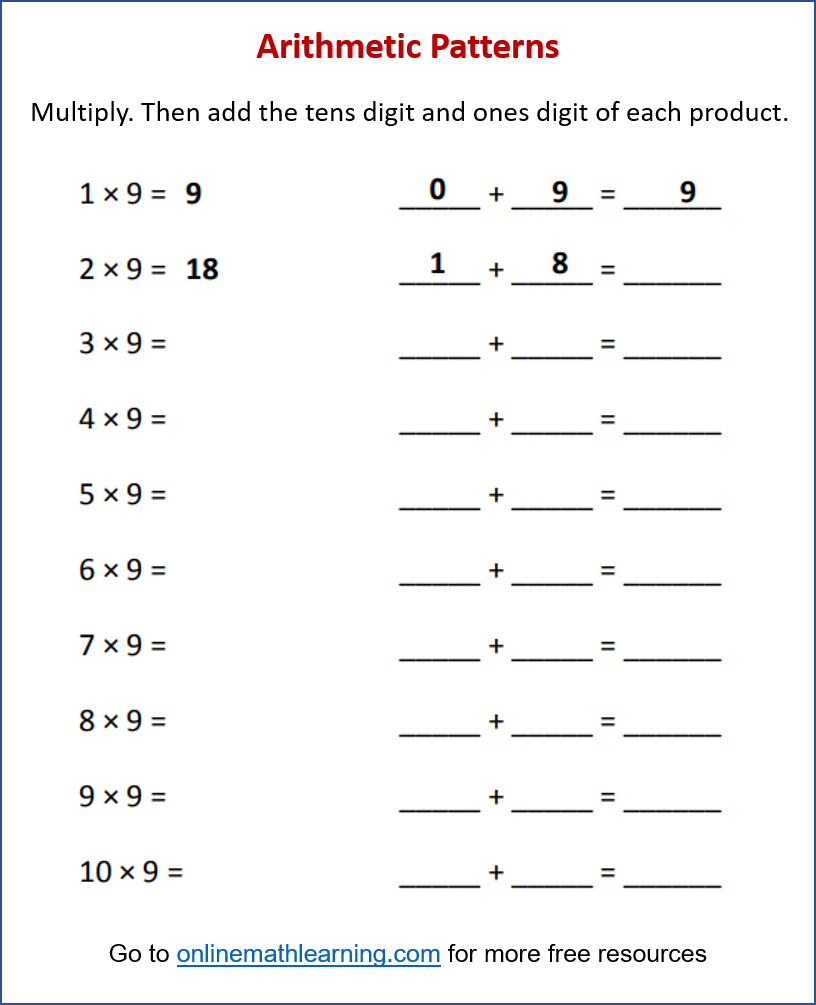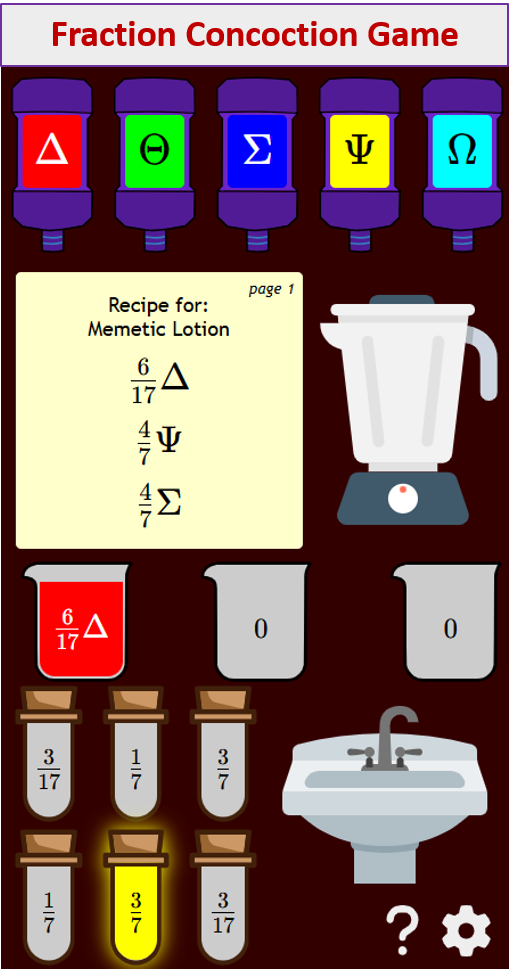Arithmetic Patterns (Grade 3)
Related Topics:
Lesson Plans and Worksheets for Grade 3
Lesson Plans and Worksheets for all Grades
More Lessons for Grade 3
Common Core For Grade 3
Videos, examples, solutions, and lessons to help Grade 3 students learn to identify arithmetic patterns (including patterns in the addition table or multiplication table), and explain them using properties of operations. For example, observe that 4 times a number is always even, and explain why 4 times a number can be decomposed into two equal addends.
Common Core: 3.OA.9
Suggested Learning Target
- I can identify and describe arithmetic patterns in number charts, addition tables, and multiplication tables.
- I can explain arithmetic patterns using properties of operations.
Identify and explain arithmetic patterns using properties of operations (CCSS: 3.OA.9)
The following diagram gives a pattern that can be helpful for remembering the 9th times table. Scroll down the page for more examples and solutions on arithmetic patterns.

Numbers Worksheets
Practice your skills with the following worksheets:
Printable & Online Numbers Worksheets
Identifying Patterns: 3.OA.9
How to identify an arithmetic pattern?
Explain why the pattern makes sense.
Discover Number Patterns With Skip Counting
Grade 3 / Math / Number Sense
CCSS: Math.3.OA.D.9 Math.Practice.MP3 Math.Practice.MP7
Lesson Objective
Look for patterns when counting by 200s
3.oa.9
The Common Core State Standards (CCSS) videos are designed to support states, schools, and teachers in the implementation of the CCSS. Each video is an audiovisual resource that focuses on one or more specific standards and usually includes examples/illustrations geared to enhancing understanding. The intent of each content-focused video is to clarify the meaning of the individual standard rather than to be a guide on how to teach each standard although the examples can be adapted for instructional use.
Identify arithmetic patterns
How to identify arithmetic patterns (including patterns in the addition table or multiplication table), and explain them using properties of operations. For example, observe that 4 times a number is always even, and explain why 4 times a number can be decomposed into two equal addends.
Examples:
- There are 8 rafts floating down the river. Each raft is carrying 4 people. Find the total number of people in the rafts.
- A farmer is collecting eggs from the hen house. On Monday, the farmer collects 5 eggs. On Tuesday, he collects 12 eggs. On Wednesday, the farmer collects 19 eggs. If this pattern continues, how many eggs does he collect on Saturday?
- A bottling plant packages one box of bottles water each minute. Each number below represents the total number of bottles packaged after 1 more minute. How many bottles are in each box. Complete the pattern.
- Anna has 15 shells. She gives away 6 shells to her sister. She wants to line up the remaining shells into 3 equal rows. How many shells will be in each row?
Try out our new and fun Fraction Concoction Game.
Add and subtract fractions to make exciting fraction concoctions following a recipe. There are four levels of difficulty: Easy, medium, hard and insane. Practice the basics of fraction addition and subtraction or challenge yourself with the insane level.

We welcome your feedback, comments and questions about this site or page. Please submit your feedback or enquiries via our Feedback page.